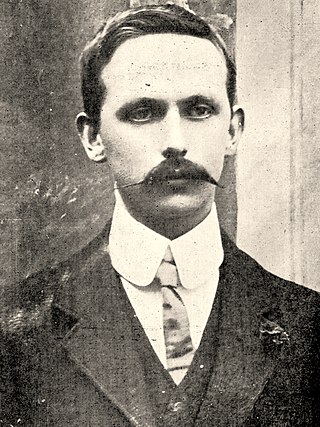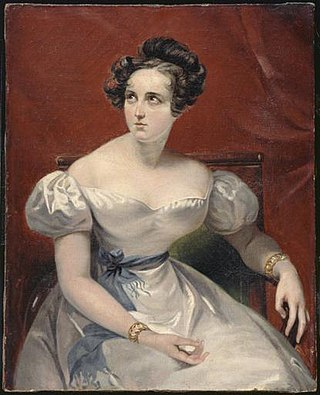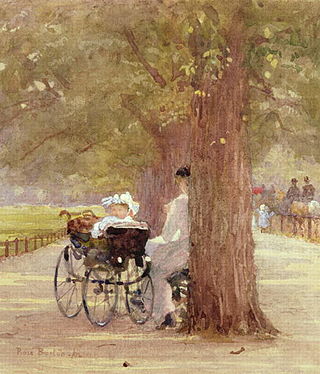This article includes a list of references, related reading, or external links, but its sources remain unclear because it lacks inline citations .(June 2020) |
Harriet Letitia Martin was a 19th-century Irish novelist.
This article includes a list of references, related reading, or external links, but its sources remain unclear because it lacks inline citations .(June 2020) |
Harriet Letitia Martin was a 19th-century Irish novelist.
Harriet Letitia Martin was born in London in 1801. She was the daughter of the novelist and stage-critic Harriet Evans Martin, and Richard Martin MP, a prominent member of the Martyn family of Galway. Other literary members of her family included her niece, Mary Letitia Martin (1815–1850) and her cousin Violet Florence Martin (1862–1915).
She spent the first years of her life in London, where her father sat as member for parliament for Galway. She was raised at the family home in Ballynahinch, County Galway; her father's townhouse in Galway town; and in Dublin. Following her father's dismissal from the House of Commons for illegal election in 1826, Martin, her mother and surviving sister accompanied him into exile in France, which lasted till his death in January 1834.
Martin is said to have travelled widely in Europe and in North America. She made the acquaintance of John Banim in Paris, and while staying with him, wrote her best-known work, Canvassing .
In later life, she settled in Dublin, where she lived with her sister. She died in Dublin, unmarried, in 1891.

Constantine Henry Phipps, 1st Marquess of Normanby,, styled Viscount Normanby between 1812 and 1831 and known as The Earl of Mulgrave between 1831 and 1838, was a British Whig politician and author. He notably served as Lord Lieutenant of Ireland from 1835 to 1839 and as Home Secretary from 1839 to 1841 and was British Ambassador to France between 1846 and 1852.

Harriet Martineau was an English social theorist often seen as the first female sociologist. She wrote from a sociological, holistic, religious and feminine angle, translated works by Auguste Comte, and, rarely for a woman writer at the time, earned enough to support herself. The young Princess Victoria enjoyed her work and invited her to her 1838 coronation. Martineau advised "a focus on all [society's] aspects, including key political, religious, and social institutions". She applied thorough analysis to women's status under men. The novelist Margaret Oliphant called her "a born lecturer and politician... less distinctively affected by her sex than perhaps any other, male or female, of her generation."

Anna Brownell Jameson was an Anglo-Irish art historian whose work spanned art and literary criticism, philosophy, travel writing, and feminism. She became very well known for her extensive writings. Jameson was connected to some of the most prominent names of the period including Joanna Baillie, Fanny Kemble, Elizabeth Barrett-Browning and Robert Browning, Harriet Martineau, Ottilie von Goethe, Lady Byron, Harriet Hosmer, Ada Lovelace, Charles and Elizabeth Eastlake, and Barbara Leigh Smith Bodichon.

Marguerite Gardiner, Countess of Blessington, was an Irish novelist, journalist, and literary hostess. She became acquainted with Lord Byron in Genoa and wrote a book about her conversations with him.

Éamonn Ceannt, born Edward Thomas Kent, was an Irish republican, mostly known for his role in the Easter Rising of 1916.

Colonel Richard Martin, was an Irish politician and campaigner against cruelty to animals. He was known as "Humanity Dick", a nickname bestowed on him by King George IV. He succeeded in getting the pioneering Cruel Treatment of Cattle Act 1822, nicknamed 'Martin's Act', passed into British law.
Catherine Ann Crowe, née Stevens was an English novelist, a writer of social and supernatural stories, and a playwright. She also wrote for children.

Nora Barnacle was the muse and wife of Irish author James Joyce. Barnacle and Joyce had their first romantic outing in 1904 on a date celebrated worldwide as "Bloomsday" after his modernist novel Ulysses. Barnacle did not, however, enjoy the novel. Their sexually explicit letters have aroused much curiosity, especially as Joyce normally disapproved of coarse language, and they fetch high prices at auction. In 2004, an erotic letter from Joyce to Barnacle sold at Sotheby's for £240,800.

Violet Florence Martin was an Irish author who co-wrote a series of novels with cousin Edith Somerville under the pen name of Martin Ross in the late nineteenth and early twentieth centuries.

Harriet Constance Smithson, most commonly known as Harriet Smithson, who also went by Henrietta Constance Smithson, Harriet Smithson Berlioz, and Miss H.C. Smithson, was an Anglo-Irish Shakespearean actress of the 19th century, best known as the first wife and muse of Hector Berlioz.

Richard Le Poer Trench, 2nd Earl of Clancarty, 1st Marquess of Heusden, styled The Honourable from 1797 to 1803 and then Viscount Dunlo to 1805, was an Anglo-Irish peer, a nobleman in the Dutch nobility, and a diplomat. He was an Irish, and later British, Member of Parliament and a supporter of Pitt. Additionally he was appointed Postmaster General of Ireland, and later, of the United Kingdom.
Mary Letitia Martin (1815–1850) was an Irish writer who was known as the "Princess of Connemara". Educated at home in the upper-class style, she was fluent in numerous languages. She published two books in her lifetime, and a third was published posthumously.
Letitia Marion Hamilton was an Irish landscape artist and Olympic bronze medallist.
Thomas Óge Martyn, Mayor of Galway, fl. 1533-c. 1577.
Harriet Evans Martin was an Anglo-Irish novelist.

Rose Mary Barton was an Anglo-Irish artist; a watercolourist who painted landscape, street scenes, gardens, child portraiture and illustrations of the townscape of Britain and Ireland. Barton exhibited with a number of different painting societies, most notably the Watercolour Society of Ireland (WCSI), the Royal Academy (RA), the Royal Hibernian Academy (RHA), the Society of Women Artists and the Royal Watercolour Society (RWS). She became a full member of the RWS in 1911. Her paintings are in public collections of Irish painting in both Ireland and Britain, including the National Gallery of Ireland and Dublin City Gallery The Hugh Lane in Dublin, and the Ulster Museum in Belfast.
Sir George Shee, 2nd Baronet was an Irish diplomat.

Josephine Letitia Denny Fairfield CBE was a medical doctor, a lawyer, a war-worker, and the first ever female Chief Medical Officer for London. She received a CBE for her outstanding achievements in medicine following her contributions in World War I, despite initially having been rejected by the War Office. Fairfield went on to work for the London County Council, where she campaigned for the initiation of new Public Health departments relating in particular to women's and children's health, and defending who she believed were the most vulnerable members of society. She was a feminist and a Fabian, and during her later life became a convert to Roman Catholicism and a believer in witchcraft.
Catherine Dorothea Burdett was an Irish novelist who drew mainly on personal experience.
Letitia OverendL.L.D., DStJ was an Irish philanthropist, filmmaker and motor enthusiast. Her most notable work was with the St John Ambulance Brigade and being a co-founder of the Children's Sunshine Home at Stillorgan, County Dublin with Ella Webb.